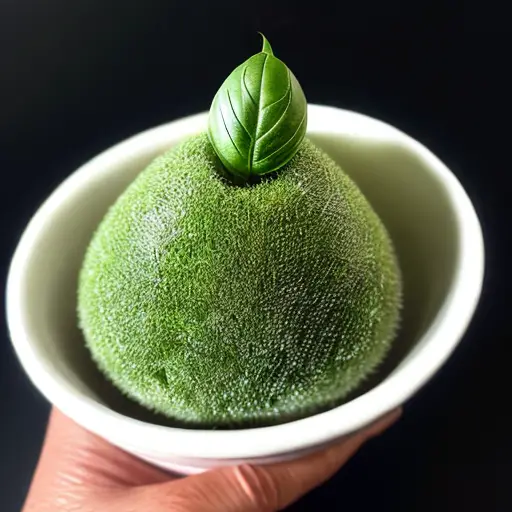Choosing the Perfect Basil Variety: A Guide to Selecting the Ideal Plant
Are you tired of bland dishes that lack that extra punch of flavor? Look no further than the magnificent world of basil! Choosing the perfect basil variety can be a daunting task, but fear not, my fellow food enthusiasts. When it comes to caring for your fresh basil plant, there are a few key tips to keep in mind. First and foremost, basil loves the sun, so find a sunny spot where it can bask in all its leafy glory. Remember, basil is a bit of a diva when it comes to water, so don't drown it in H2O. Instead, give it a moderate amount of water, just enough to keep it hydrated but not swimming like a fish in a pond. And here's a pro tip: if you want your basil to grow bushier, don't be afraid to pinch off those luscious leaves. It's like giving your plant a stylish haircut! So, go forth and choose your basil variety wisely, my friends, and let the flavors of your dishes reach new heights!
Essential Growing Conditions: Providing Optimal Care for Your Basil Plant
An interesting fact about caring for fresh basil plants is that they thrive when grown alongside certain companion plants. For instance, planting basil near tomatoes can actually enhance the flavor of both plants. This is because basil emits natural oils that repel pests that commonly affect tomatoes, such as aphids and whiteflies. Additionally, the aroma of basil can attract beneficial insects like bees, which aid in pollination. So, not only does growing basil alongside tomatoes create a visually appealing garden, but it also benefits the overall health and taste of both plants.
Are you ready to embark on a basil-growing adventure? Well, buckle up, my green-thumbed comrades, because providing optimal care for your basil plant is no joke. First things first, basil craves sunlight like a sunflower on steroids, so find a sunny spot where it can soak up those rays. Now, let's talk about soil. Basil prefers well-draining soil that's not too soggy or too dry, just like the perfect brownie - moist, but not mushy. And when it comes to watering, remember that basil is a bit of a drama queen. It doesn't want to be parched, but it also doesn't want to be swimming in a pool of water. So, find that sweet spot and water it just enough to keep it content. And last but not least, don't forget to give your basil some space to spread its leafy wings. Crowding it with other plants is like forcing it to attend a never-ending family reunion. So, my fellow basil enthusiasts, follow these essential growing conditions, and watch your basil plant thrive like a superstar in the garden!
Nurturing Basil from Seed to Harvest: Step-by-Step Cultivation Tips

Are you ready to embark on a journey of basil cultivation, from seed to harvest? Strap on your gardening gloves and get ready to nurture your basil plant like a proud parent. Step one: start with quality seeds. Choose a basil variety that suits your taste buds and culinary needs. Once you have your seeds, it's time to sow them. Plant them in well-draining soil, about a quarter-inch deep, and gently cover them with a thin layer of soil. Now, here's the tricky part - patience. Basil seeds can take a while to germinate, so don't lose hope if you don't see sprouts right away. Keep the soil moist, but not drenched, and wait for the magic to happen.
Once your basil seedlings emerge, it's time to give them some tender loving care. Basil loves the sun, so find a sunny spot where it can soak up those rays. If you're growing basil indoors, consider using a grow light to provide the necessary light intensity. Water your basil regularly, but be careful not to overdo it. Basil prefers moist soil, but it doesn't appreciate being waterlogged. Keep an eye on the soil's moisture level and adjust your watering accordingly.
As your basil plants grow, it's important to give them some breathing room. Thin out the seedlings, leaving about 4-6 inches of space between each plant. This will allow them to grow into healthy, robust plants. And here's a secret to encourage bushier growth - pinch off the top leaves of your basil plants. This will stimulate lateral branching and result in a fuller, more productive plant.
When it comes to harvesting your basil, the key is to strike a balance. You want to enjoy the fresh, aromatic leaves while ensuring the plant continues to thrive. Start by harvesting the larger leaves from the top, working your way down the plant. Avoid removing more than a third of the plant at once, as this can hinder its growth. And remember, the more you harvest, the more your basil will produce. So, keep plucking those leaves and savor the flavors they bring to your culinary creations.
Nurturing basil from seed to harvest may require some patience and care, but the rewards are well worth it. With the right conditions and a little TLC, you'll have a bountiful supply of fresh basil to elevate your dishes to new heights. So, roll up your sleeves, get your hands dirty, and enjoy the journey of cultivating your very own basil garden. Happy growing!
Troubleshooting Common Basil Issues: Solutions for a Healthy Herb Garden
A fun fact about caring for fresh basil plants is that they thrive when you talk to them! Studies have shown that talking to your plants can help them grow better, and basil is no exception. So go ahead and have a conversation with your basil plant while you water it, and watch it flourish!
Even the most experienced gardeners encounter challenges when it comes to growing basil. But fear not, my fellow herb enthusiasts, for there are solutions to common basil issues. If you notice yellowing leaves, it could be a sign of overwatering or nutrient deficiencies. Adjust your watering schedule and consider adding organic fertilizer to replenish those essential nutrients. On the other hand, if your basil leaves are turning brown and crispy, it may be due to underwatering or excessive heat. Ensure your basil receives adequate water and provide some shade during scorching summer days. And if you spot any pests, like aphids or whiteflies, don't panic. Introduce natural predators like ladybugs or use organic insecticidal soap to keep those pesky critters at bay. Remember, a healthy herb garden is within reach with a little troubleshooting and a whole lot of love for your basil plants.

